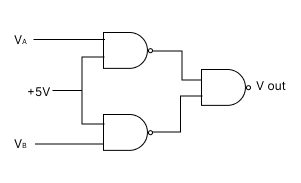2077
Physics
Full Marks: 60 + 20 + 20
Pass Marks: 24 + 8 + 8
Time: 3 Hours
Candidates are required to give their answers in their own words as far as practicable. The figures in the margin indicate full marks.
Group A
Attempt any two questions. (2 X 10 = 20)
Explain RTL and TTL gates. How memory and clock circuits can be made by using these gates? Explain how they work?
Set up a differential equation for an oscillation of a spring using Hooke’s and Newton’s second law. Find the general solution of this equation and hence the expressions for the period, velocity, and acceleration of oscillation.
Describe the Frank-Hertz experiment. Discuss its result and outline limitations.
Group B
Attempt any Eight questions. (8 X 5 = 40)
Discuss magnetic dipole moment. What is its effect on atoms and on molecules? Explain.
Describe the following process of IC production: (a) Oxidation, (b) Pattern definition, and (c) Doping.
Explain the construction and working of bipolar junction transistor (BJT)
A roulette wheel with moment of inertia $I = 0.5 kgm^2$ rotating initially at $2 rev/sec$ coasts to a stop from the constant friction torque of bearing. If the torque of the bearing. If the torque is $0.4 Nm$, how long does it take to stop?
Two large parallel plates are separated by a distance of $5 cm$. The plates have equal but opposite charges that create an electric field $E = 3.2 \times 10^{-5} kg$ is released from the positively charged plate, and it strikes the negatively charged plate $2 \times 10^{-6}$ second later. Assuming that the electric field between the plates is uniform and perpendicular to the plates. what is the strength of the electric field?
A neutron spectroscopy a beam of mono energetic neutrons is obtained by reflecting reactor neutrons from a beryllium crystal. If separation between the atomic planes of the beryllium crystal is $0.732 A°$, what is the angle between the incident neutron beam and the atomic planes that will yield a monochromatic beam of neutrons of wavelength $0.1 A°$.
What is the probability of finding a particle in a well of width $\alpha$ at a position $\frac{a}{4}$ from the wall if $n = 1$, if $n = 2$, if $n = 3$.
Use the normalized wavefunction $\psi(x) = \left(\frac{2}{a}\right)^{1/2} \sin\left(\frac{n\pi x}{a}\right) e^{-\frac{iEt}{\hbar}}$.
The energy gap in silicon is $1.1 eV$, whereas in diamond it is $6eV$. What conclusion can you draw about the transparency of the two materials to visible light($4000 A°$ to $7000 A°$)?
Find the truth table for the circuit shown in the figure. What logic function will the circuit perform if the constant $+5 V$ input to the first two gates is changed to ground potential?
